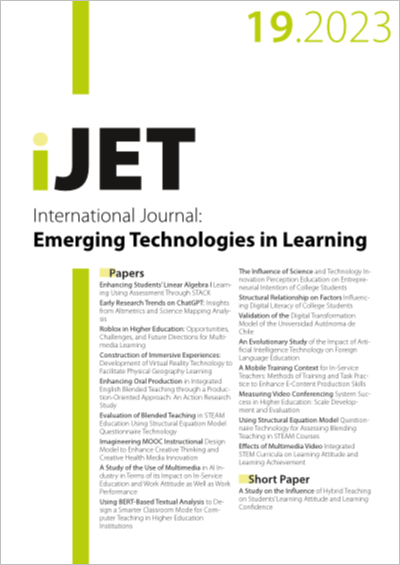Using Structural Equation Model Questionnaire Technology for Assessing Blending Teaching in STEAM Courses
DOI:
https://doi.org/10.3991/ijet.v18i19.42503Keywords:
STEAM, Blending teaching, Effect evaluation, SEMAbstract
Questionnaires for blending teaching effect evaluation from the perspective of science, technology, engineering, arts, and mathematics (STEAM) were reviewed in this study, and measurement problems for the questionnaire were designed. Effects of online and offline teaching environments, online teaching resources, and offline teaching processes in blending teaching of Engineering Surveying on learning satisfaction of university students were estimated using structural equation model (SEM) questionnaire technology. Results demonstrated that the overall Cronbach’s α of the questionnaire is 0.796 and the KMO value is 0.828 (> 0.8), indicating the good reliability and validity of the questionnaire. The online and offline teaching environments and offline teaching processes have a significantly positive promotion effect on learning satisfaction in the blending teaching mode. The online teaching resources have positive promotion effects on learning satisfaction, but such effects are not significant. Research conclusions have important references to disclose and analyze the online and offline interaction in blending teaching, recognize major problems to determine improvement direction, and design blending teaching strategic interventions and practices that promote learning engagement.
Downloads
Published
How to Cite
Issue
Section
License
Copyright (c) 2023 Na Li, Lin Wang

This work is licensed under a Creative Commons Attribution 4.0 International License.



